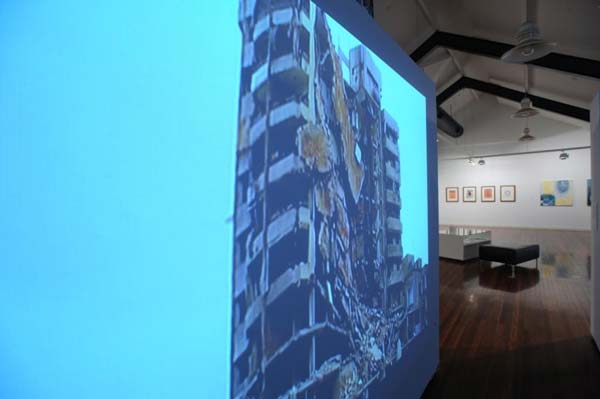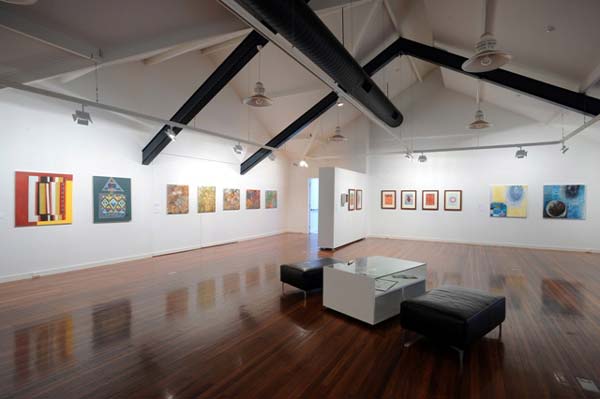On any day, the countries of the Middle East are among the top 10 headlines in the media. The Palestinian-Israeli conflict, the war in Iraq, or the various wars in Lebanon. Not to mention the people detained in Guantanamo Bay or those on trial for “terrorist related” activities in Australia.
What does a person make of the Middle East in this terrible din of conflict and violence? In this space it is almost impossible to conceive of an Arab or a Muslim as someone equal to “us”.
In Western Sydney, in a space in Australia which has showcased and promoted the work of artists from a diversity of communities, an exhibition at the Blacktown Arts Centre is currently showing the work of some of Australia’s most accomplished Australian Arab artists. The exhibition, Tales of Colour, dissects the relationship between art and conflict and provokes and challenges the public.
Advertisement
If you think of Picasso’s Guernica - which protested the Nazi bombing of the Basque town Guernica in Spain - and the peace symbol that it became; then perhaps the work of recently arrived Arab artists will also become similarly iconic.
For many Arab artists, interrogating conflict has been a core preoccupation: a disquiet informs an urgency in artistic works which seek to create bridges; to move and to contest.
Moroccan Australian Fatima Killeen is a visual artist who works in installation and as a painter. Her art embodies a personal search for peace among cultural identities, difference and lived experience. Her painting, Legal Illegal, Finding Peace ponders the story of finding refuge and offers a different possibility to the antagonism which often greets refugees who reach the shores of this vast and prosperous country. Perhaps we can see ourselves as truly co-existing with difference? Why is this not possible she asks?
Award winning Killeen, who makes extensive use of Arabic calligraphy, says her work has changed over the time she has been in Australia. At first, it was “a way of staying in touch” with her identity and heritage. But recently, she has become engaged in investigating the political climate of the 21st century. Gently questioning history and disparities of power between the west and the Arab peoples, Killeen believes that “there is a common place which may be built upon to develop human contact between different cultural values. It is a place of peace, respect and tolerance.”
Lebanese born Khaled Sabsabi’s multimedia installation interrogates the impact of the media spectacle on conflict. He explores the relationship of the individual to that spectacle via an installation on Israel’s bombing of Lebanon in 2006.

Advertisement
His video installation, a series of interviews intercut with images of buildings devastated by Israeli bombs, forces the viewer to confront the personal cost of living in a war torn country. The personal stories which bind us to each other are the stories never heard in the simplistic often sensationalist and sometimes misinformed reporting of wars; the person behind the sound bite or the statistic and images of devastation; the person whose life was destroyed and whose story is a disturbing narrative of the arbitrariness of regional violence. Sabsabi’s work makes the viewer confront some uncomfortable truths about who an Arab is.
One of his interviewees tells the harrowing story of just one war he lived through and the lives it claimed:
We in our neighbourhood were the majority, Muslims, mostly Sunni, some Shiaa, many nationalities, Syrian, Palestinian, Lebanese and others.
… for example when Shiaa’s ruled, we would write on our doors Ali or Fouad even if it’s a lie, in the time of the Sunni we would write Mohammad so they wouldn’t enter our houses. In the time of the Christians, they came in our houses, broke our doors and took my father in front of our eyes numerous times. It was an experience that I hope no one has to endure, I can’t forget their faces or their images, there was a group known as the Bulls, Twisted Muscles. Their looks … big dark, scary. These people have no mercy. Their method was butchery [of] identity. I can’t picture how God can create a human being with this much anger and hate.
Faisal Al Saadi, nicknamed The Picasso of Iraq because of his cubist influenced work, arrived here four years ago and has, like many artists from culturally diverse backgrounds, found a home for his art in Western Sydney.

Al Saadi is in his 70s and draws upon his Mandaean heritage to talk about contemporary concerns. His painting, To Unknown, is a tribute to the senseless loss of life. Beautiful and multi layered, he says his work “combines the symbolism of the Iraqi environment with today's modern colours. I refer back to the days of Mesopotamia and ask myself how can the ideas of our past be conveyed with today's modern techniques? I try to accomplish this task. I aim to place a brick on the strong foundation our past fathers based on the symbols of art.”
Tales of Colour runs until August 30, 2008 at Blacktown Arts Centre, 78 Flushcombe Rd, Blacktown. Ph (02) 9839 6558.